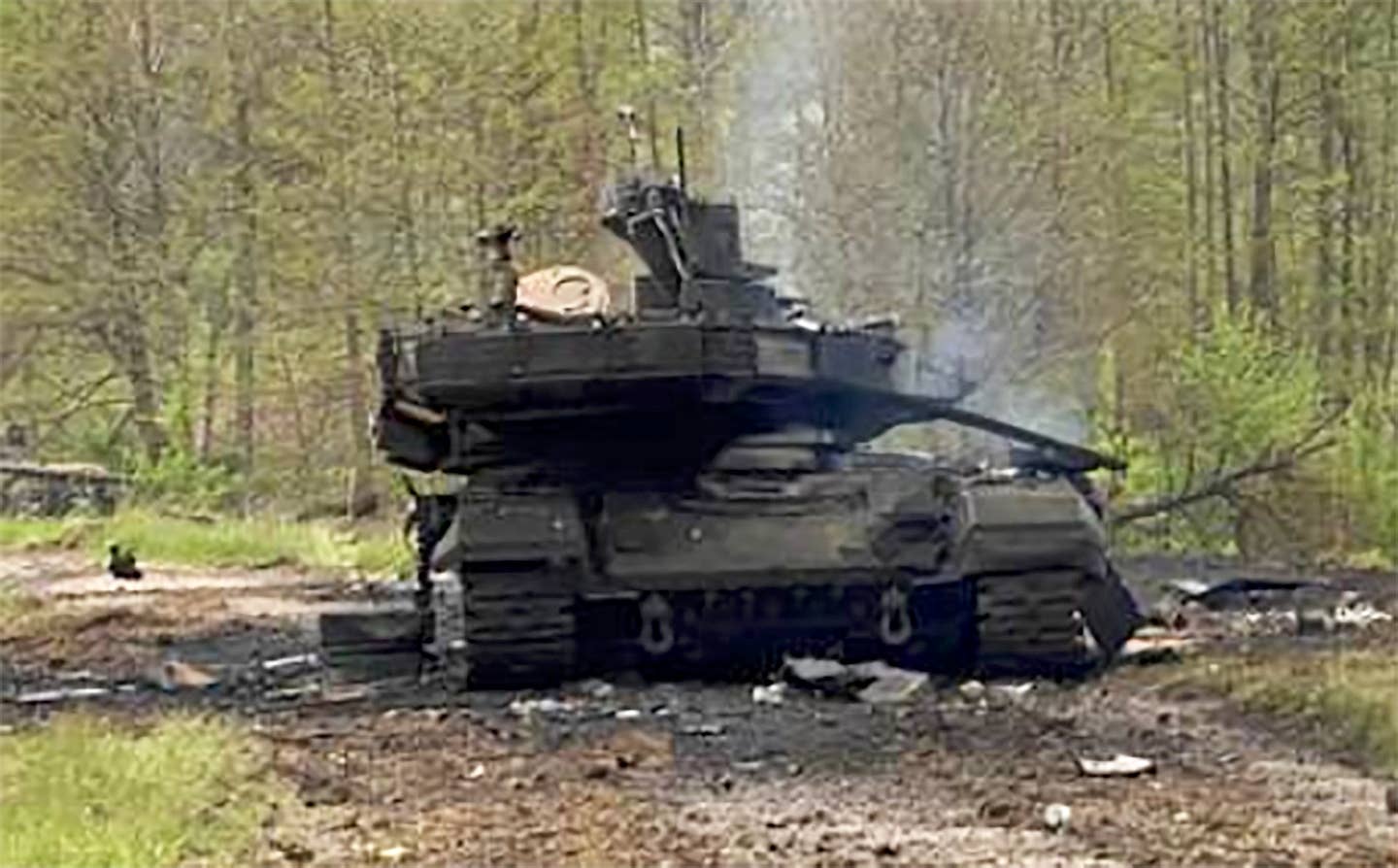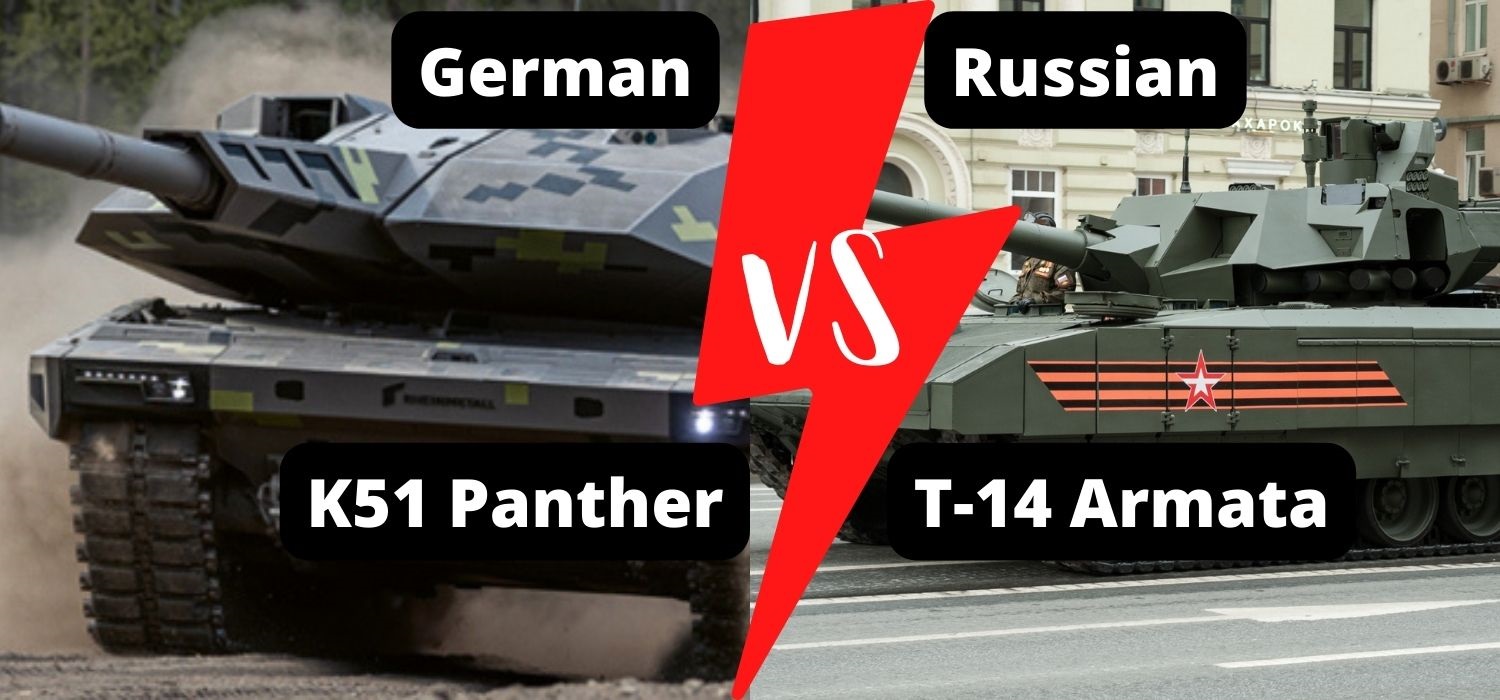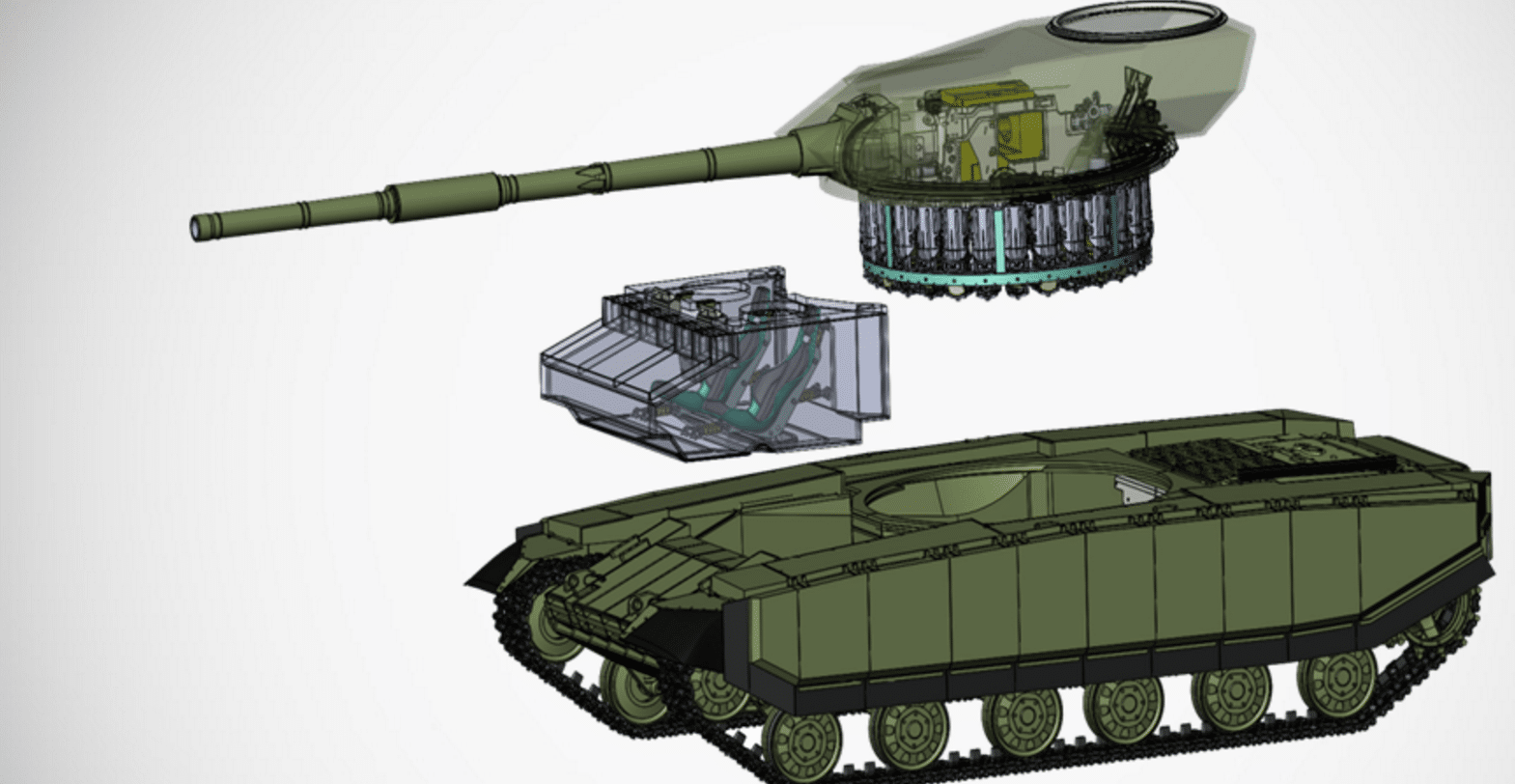Armata Tank Ukraine - This article may require copy editing for grammar, style, cohesion, tone, or spelling. You can help by editing it. (January 2023) (Learn how and how to remove this template message)
T-14 Armata (Russian: Т-14 "Armata"; industrial name: Russian: Объект 148, romanized: Ob'yekt 148, lit. "Object 148"), a potential Russian main battle tank (MBT) based on the Armata combat platform universal.
Armata Tank Ukraine

Russian state news agency TASS says serial production of the Armata is set to begin in 2022, and delivery of an experimental batch of 100 units to the Temankaya 2nd Guards Motorized Rifle Brigade is set to begin in 2022.
Amid War Setbacks, Putin Likely To Deploy Latest T 14 Armata Tanks In Donbas L Ukraine War
After the cancellation of the T-95 in 2010, Uralvagonzavod began the OKR Armata (Armamt) design study. The research resulted in Object 148, which was based on the T-95 (itself based on Object 187). The Russian military has been reducing T-90 orders since 2012 to prepare for the arrival of the new tank.
The T-14 made its first public appearance in March 2015, when several tanks with covered turrets were loaded onto a railcar in Albino. This was later revealed on May 9, 2015, during the Victory Day parade in Moscow.
During the 2015 trials, one of the tanks suddenly stopped moving, and after attempts to tow it failed, after about fifteen minutes it lost its power.
At least seven T-14 Armata tanks appeared in Moscow's Victory Day parade in 2015 and 2016, and five in 2017 and 2018. Four were expected in promotional materials for the 2019 parade.
Ukraine Humiliates Russia By Destroying One Of Its Most Modern Tanks: The T 90m
State tests of the tank began in early 2020. This became known in April 2020, when the Minister of Industry and Trade Dis Mantorov announced that the T-14 had already been tested in combat conditions on the territory of the Syrian Arab Republic.
Then in July 2020, a test of an unmanned version of the T-14, named Tachanka-B (Russian: Тачанка-Б), was announced.
In November 2022, The Moscow Times and Newsweek reported that the country's program under which the T-14 Armata was developed was suspended, because Russia's invasion of Ukraine in 2022 requires radical changes for urgent needs, at the planned costs.

However, in the same month, several videos and photos of T-14s, apparently training in the same area of the Russian conscripted army, appeared on social media. The videos were posted at the Kazan training ground, where cadets of the Kazan Higher Tank Command School train.
Challenger 2 Versus The T 14 Armata
On December 25, 2022, Vladimir Solovyov, a TV host and apologist for the Russian leadership, released footage of T-14 combat training, along with other sources, claiming that the tank was ready for battle and had already been deployed to a "special military operation" zone. .
In 2016, the Russian Ministry of Defense announced that it had signed a contract for a "trial batch" of 100 T-14 tanks to be delivered by 2020, with the full project being extended to 2025.
In July 2018, Deputy Prime Minister of Defense and Space Industry Yuri Borisov said that there was currently no need for mass production of the Armata, as its older predecessors, especially the latest versions of the T-72, remained "effective". American, German and French. partners", saying: "Why flood our army with Armets, T-72s are in high demand in the market(s)?"
In August 2018, at the ARMY2018 forum outside Moscow, the Russian Ministry of Defense signed a contract for the purchase of 32 T-14 tanks and 100 T-15 infantry vehicles, the delivery of which should be completed by 2021.
Tank 2022: Demos & Decisions For Army's Next Generation Combat Vehicle
In February 2019 it was announced that the first 12 tanks would be delivered by this time.
In August 2019, the Russian military-industrial correspondent reported that of the 132 Armata surface vehicles agreed upon in a three-year contract until 2021 (including T-14 tanks, as well as T-15 IFVs and T-16 BREM ARVs (ru) : -16 ( БРЕМ) ), assuming an annual production of 44 cars, only 16 will be delivered by 2019. This implies a shortage of at least 28 cars that year.
In mid-January 2020, the head of Rostec (the concern that owns Orlevagonzbod) said that no vehicles from the Armata platform, including T-14 tanks, had been delivered, and in February, the CEO of Orlevagonzbod said only that the Armata platform. Armor (not necessarily T-14 tanks. ) would begin deliveries to Begin operational evaluation in 2020, with a full contract for 132 Armata platform vehicles to be completed by 2022.

Furthermore, also in February 2020, it became clear that the container's built-in wine requirements package was not fulfilled by the Construction Bureau, and the wine development project is sitting in the first quarter of 2020, which will further delay imports. with an indefinite tank time.
Russian Tank Of The Latest Generation T 14 Armata, On The Training Ground Editorial Photography
In August 2020, the Minister of Industry and Trade told reporters that the production of 132 "Armata Platform" tanks and combat vehicles, including T-14 tanks, began after solving problems in wine production and thermal imaging equipment, and they will be supplied to the company. The armed forces in 2021
In July 2021, Minister of Industry and Trade Dis Mentorov said that the tank would enter serial production in 2022. But in March, Defense Minister Sergei Shoigu announced that only an "experimental-industrial" batch of T-14s would be delivered in 2022.
In August 2021, Deputy Minister of Defense Alexei Krivoruchko announced that by 2021, the Russian Armed Forces will receive 20 T-14 "Armata" tanks.
On August 23, 2021, a Rostec official said that the company had sent an unspecified number of T-14 tanks to the Russian armed forces in an "experimental batch".
In Ukraine's Kherson Offensive, An Echo Of A U.s. Military Fiasco: The 1944 Battle Of Rapido River — Defense Priorities
As of November 2021, state trials were underway and expected to end in 2022, with a "trial portion" of twenty tanks yet to be delivered to the armed forces.
On December 24, 2021, Rostec's first deputy director general, Vladimir Artyakov, announced that "serial production" of the T-14 had begun.
On December 9, 2021, MIC First Deputy Chairman Andrei Yelkhaninov said that state testing of the new T-14 ammunition loader should be fully completed in 2022, and that after 2023, Russian troops will be supplied with "more than 40 tanks of the type" Armata". .

The Armata was designed over a period of five years and has several innovative features, including an unmanned turret. A crew of three sits in an armored pod at the front of the hull.
Ukrainian Military Successes Force Belarus To Rethink Role In Putin's War
The gun is capable of firing new guided missiles such as the 9M119M1 Invar-M, which has an effective range of 100m to 5km and can engage low-flying aerial targets such as helicopters,
Secondary armament consists of a 12.7×108 mm Kord machine gun (GRAU index: 6P49) with 300 rounds (not seen during the 2015 parade) and a 7.62×54 mm R Pecheg PKP machine gun (GRAU index: 6P41) or PKKTM (6P TM ). 1000 balls.
However, Russian gunners have so far retained the 125 mm gun, estimating that improved ammunition should increase effectiveness, concluding that a larger-bore weapon would provide little practical advantage.
At the prototype stage, several 1,500 to 2,000 hp engines were tested on the platform, with the 1,500 hp version reportedly allowing a top speed of 82 km/h. The T-14 runs on a ChTZ 12N360 diesel engine (A-85- 3A)
Russian Tanks Are Being Defeated By Ukraine's Muddy Terrain
The T-14 has a 12-speed automatic transmission, with a top speed of 80-90 km/h (50-56 mph) and a range of 500 km (300 mi).
Unlike earlier Russian and Soviet designs such as the T-90/80/72/64, the T-14 has 700mm road wheels on each side, based on the T-80 version.
This can be done to improve the turning ability of the tank, as the active suspension system improves the lock-on time of the target.

By a factor of 2.2 and reduces the time between target detection and response by 31%, due to a smoother path.
Russia Field Tests New Armata Tank
The main shield armor is built with new steel coded 44S-SV-SH, which has extremely high strength and is resistant to extreme temperatures. It is 15% lighter than the steel used in older tanks. There is also a completely new approach to composite armor with an unknown ceramic layer and using ERA within its basic design as a continuous layer (not as a "brick" addition). The powered armor is on the sides by 2/3 forward. The armor (cage) is located behind 1/3 on the sides and back.
Both the chassis and the turret are equipped with a Dual Explosive Reactive Armor (ERA) system on the front, sides and top.
The tank uses an integrated, computerized control system that monitors the status and functions of all the tank modules. In combat, software can analyze threats and recommend or automatically take actions to eliminate them, while without an external threat it can detect and correct staff errors.
The active defense system of Afghanistan (Russian: Афганит) operates on the tank. Previous Russian APS were either "hard kill" (Drozd, Ara) or "soft kill" (Shtora-1) versions. A hard kill kinetically attacks threat missiles or other munitions, while a soft kill disrupts guidance systems (laser dazzle or infrared launchers). Afghanistan is about to introduce the first dual system, combining both soft and hard operations.
Russian T 14 Armata Tank May Join War Against Ukraine
It includes a millimeter wave radar to detect, track and intercept incoming anti-tank munitions, both kinetic energy launchers and tandem charges.
Currently, the maximum intermittent target speed is 1,700 m/s (Mach 5.0), with future increases expected.
New russian armata tank, armata tank russia, tank armata rusia, armata battle tank, russian armata tank, t 14 armata tank, t 99 armata tank, russian t 14 armata tank, armata main battle tank, t14 tank armata, tank armata, russian t 14 armata main battle tank

0 Comments